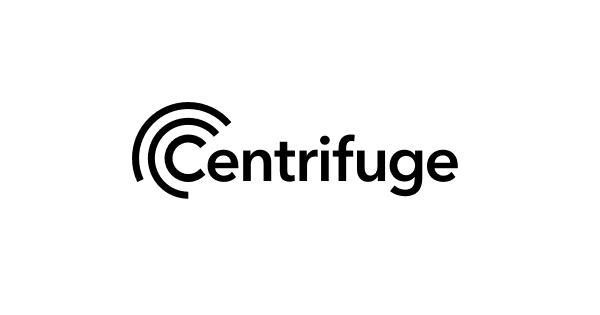Centrifuge (CFG)
What Is Centrifuge (CFG)?
Centrifuge is a decentralized asset financing protocol. It connects decentralized finance (DeFi) with real-world assets (RWA) while trying to lower the cost of capital for small and mid-size enterprises (SMEs) and provide investors with a stable source of income. The main goal of the project is to generate profits that are not tied to volatile crypto assets; the developers are pursuing the task of transferring real monetary value from fiat to cryptocurrencies.
Companies are using Centrifuge to access the liquidity that DeFi has to offer. They can tokenize real assets and use these tokens as collateral to access financing through Tinlake, a decentralized application (DApp) lending protocol. The Centrifuge blockchain is built on Polkadot (DOT) for speed and low fees, while its financial DApp Tinlake is built to access Ethereum (ETH) liquidity.
Centrifuge provides liquidity to everyone and investors receive income and rewards in the form of CFG tokens. Centrifuge links assets such as invoices, real estate and royalties with decentralized finance (DeFi). Additionally, borrowers benefit from the fact that they can finance their real assets without banks or other intermediaries.
Who Are the Founders of Centrifuge?
Centrifuge was launched in 2017 by Lucas Vogelsang and Martin Quensel.
Lucas Vogelsang is the founding engineer at Centrifuge and holds the position of the company’s CEO. Vogelsang co-founded e-commerce startup DeinDeal in 2010. After successfully selling DeinDeal to Ringier, he started working on another startup — KaufDA. Later, Vogelsang relocated to Silicon Valley to join Taulia as technical manager. In October 2017, he co-founded Centrifuge.
Martin Quensel is a co-founder at Centrifuge and its current COO. Prior to Centrifuge, he co-founded Taulia. Quensel began his career at SAP as a software developer and architect.
What Makes Centrifuge (CFG) Unique?
The Centrifuge protocol tokenizes real-world assets by converting them to non-fungible tokens (NFTs). After that, they are funded through Tinlake. Tinlake is the first DApp built on the Centrifuge chain. It was created to access liquidity on Ethereum, while CFG has its own bridge to Ethereum.
The features of Centrifuge include integration with other DeFi protocols. This feature allows Centrifuge users to get liquidity without slowdowns and protects DeFi protocols from destabilizing events by adding uncorrelated collateral. As a result, the cumulative risks are reduced and predatory lending and banks are replaced by smart contracts.
As of June 2021, Centrifuge has the highest total value locked (TVL) on the Polkadot ecosystem. Moreover, the project claims to be among the first to launch a parachain on Polkadot. When the team designed the Centrifuge chain, operational speed and low fees were prioritized.
How Is the Centrifuge Network Secured?
Users pay transaction fees in CFG tokens and transaction aggregators on Polkadot receive a share of the fee for processing and storing data. These measures, as well as the NPoS (Nominated Proof-of-Stake) mechanism and the CFG rewards, encourage users to operate fairly and select data collators that provide censorship resistance.
Overall, most of the security comes from the Polkadot relay chain. The use of Polkadot's protective mechanisms provides Centrifuge with a high level of security at a low cost.
How Does Centrifuge Work?
Centrifuge is built on Parity Substrate, a platform that allows for the creation of distributed blockchain systems on the Polkadot and Kusama networks. Centrifuge can therefore interact seamlessly with Polkadot once it becomes a parachain, benefiting from the consensus and security protocols of Polkadot’s Relay Chain. Until then, Centrifuge Chain acts as a standalone, proof-of-stake blockchain that conducts its transactions with CFG.
Centrifuge’s core product is Tinlake, an open marketplace and investment dApp built on Ethereum. Tinlake helps bring the traditional finance offering of collateralized loans onto the blockchain.
Traditionally, if a business wishes to gain additional working capital, they have to approach a wealthy private investor or submit a loan application to a large financial institution. However, small businesses rarely have access to the same financing opportunities as large businesses, despite low rates of default on their loans.
The easiest way to understand how Centrifuge utilizes DeFi to overcome these challenges is by exploring the issue from the perspective of the business and the investor:
Businesses
Tinlake allows businesses, referred to as asset originators on Tinlake, to tokenize their valuable real-world assets, such as mortgages and invoices. An NFT representation of each of those assets, called a tokenized document, is then committed to the blockchain, making both its authenticity and ownership verifiable. This tokenized asset can then be used as collateral for loans funded by the liquidity investors have deposited within Tinlake pools.
Investors
Investors, also known as lenders, are participants who lock stablecoins (such as DAI) in Tinlake pools to provide capital to businesses as loans. In return, investors earn a yield on the capital that has been provided to asset originator businesses. Investors can research asset originators before providing liquidity to their pools, in order to gain a clearer understanding of the quality of the business. Once an investor chooses a pool, they lock in their DAI and choose to receive either TIN or DROP tokens in return.
TIN offers investors higher risk and thus higher reward. Investors that choose to hold TIN accept the first risk of loss when a borrower defaults. However, TIN also provides higher, though more variable return on investment.
DROP tokens provide a lower but more stable yield. Investors who choose to receive DROP tokens have the benefit of “protection” that comes from the frontline TIN holders in each pool. Centrifuge describes the difference between TIN and DROP as the difference between junior and senior tranche investments seen in traditional finance.
Accrued interest in TIN or DROP can be redeemed at any time for DAI when an investor wants to remove their liquidity.
Tags:
Cryptocurrency
